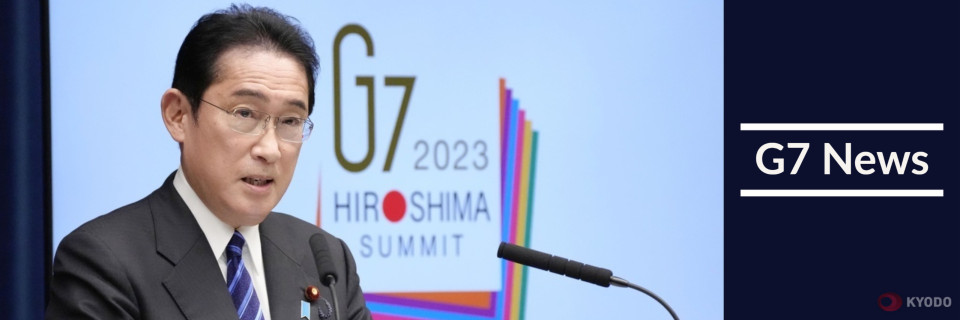U.S. President Joe Biden brought two folded paper cranes to the museum of the 1945 Hiroshima atomic bombing when the Group of Seven advanced nations' leaders visited during the May summit in the city, a government source has said.
Biden, who became the second serving U.S. president to tour the Hiroshima Peace Memorial Museum when he visited on the first day of the three-day summit, left the paper cranes behind after signing a guest book.

While there were four cranes placed before each of the G-7 leaders at the guest book signing, Biden was seen with two more made from paper of different patterns sitting by his hand as he wrote his contribution.
The government source said Wednesday Biden had brought them from the United States, and it appeared he left them with the guest book himself.
In his message at the museum, Biden wrote, "May the stories of this museum remind us all of our obligations to build a future of peace. Together let us continue to make progress toward the day when we can finally and forever rid the world of nuclear weapons. Keep the faith!"
The story of Sadako Sasaki, a victim of the Hiroshima atomic bomb attack, has made paper cranes an anti-nuclear symbol.
Sasaki died at age 12 of leukemia after folding hundreds of paper cranes. She heard a folk tale that said making 1,000 cranes would make her wish for recovery come true.
On a 2016 visit to Hiroshima on the sidelines of the G-7 leaders' summit, then U.S. President Barack Obama donated four folded paper cranes to the museum after taking in some of the exhibits.
The most recent museum visit by the G-7 leaders was a historic first, bringing together serving leaders from the nuclear-possessing states of the United States, France and Britain in the city where the first atomic bombing took place on Aug. 6, 1945.
The tour, also attended by the leaders of Japan, Canada, Germany, Italy and the European Union, lasted around 40 minutes. While there, they spoke with atomic bomb survivor Keiko Ogura, 85.
Related coverage:
Biden says in A-bomb museum guest book to strive for nuke-free world











